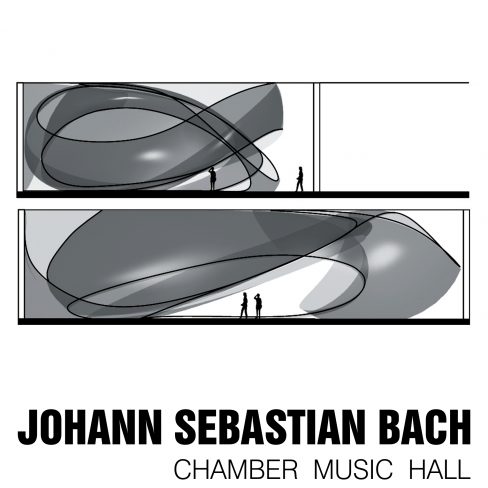
JS Bach, Chamber Music Hall
Zaha Hadid Architects have created a unique Chamber Music Hall specially designed to house solo performances of the exquisite music of Johann Sebastian Bach.
A voluminous ribbon swirls within the room, carving out a spatial and visual response to the intricate relationships of Bach’s harmonies. As the ribbon careens above the performer, cascades into the ground and wraps around the audience, the original room as a box is sculpted into fluid spaces swelling, merging, and slipping through one another.
“The design enhances the multiplicity of Bach’s work through a coherent integration of formal and structural logic. A single continuous ribbon of fabric swirls around itself, creating layered spaces to cocoon the performers and audience with in an intimate fluid space.” said Zaha Hadid.
The process of realizing the design involved architectural considerations of scale, structure and acoustics to develop a dynamic formal dialogue inseparable from its intended purpose as an intimate chamber music hall. A layering of spaces and functions is achieved through the ribbon wrapping around itself, alternately compressing to the size of a handrail then stretching to enclose the full height of the room. Circulatory and visual connections are continually discovered as one passes through the multiple layers of space delineated by the ribbon.
The ribbon itself consists of a translucent fabric membrane articulated by an internal steel structure suspended from the ceiling. The surface of the fabric shell undulates in a constant but changing rhythm as it is stretched over the internal structure. It varies between the highly tensioned skin on the exterior of the ribbon and the soft billowing effect of the same fabric on the interior of the ribbon. Clear acrylic acoustic panels are suspended above the stage to reflect and disperse the sound, while remaining visually imperceptible within the fabric membrane. Programmed lighting and a series of dispersed musical recordings activate the spaces between the ribbon outside of performance times. The installation is designed to be transportable and re-installed in other similar venues.
Pivotal to its function is the performance of the ribbon. It has been designed to simultaneously enhance the acoustic experience of the concert while spatially defining a stage, an intimate enclosure, and passageways. It exists at a scale in which it is perceived as both an object floating in a room as well as a temporal architecture that invites one to enter, inhabit and explore. Festival Director Alex Poots said, “Zaha Hadid Architects consistently come up with challenging and innovative ideas. It has been wonderful to see the realisation of this project and experience such intimate performances from the leading concert musicians within it.”
As the second main character the London-based architect chose the panton chair. Situated in the colour Black, the ergonomically shaped seating offered a very comfortable stay to the visitor. Besides, the Panton Chair fit visually into the overall concept in an elegant way. Simultaneously, the black chairs put an optical counterpart to the ribbon in White. In the Zaha Hadid Studio, her office, the visionary unses the Panton Chair as office chair.
Experience the Chamber Music Hall project by Zaha Hadid Architects.
- Project
- Realization in
- Architecture
- Interior design
- Design Object
- Photographer
- Chamber Music Hall, Manchester
- 2009
- Zaha Hadid Architects, London
- Zaha Hadid Architects, London
- Panton Chair, vitra.
- Luke Hayes
